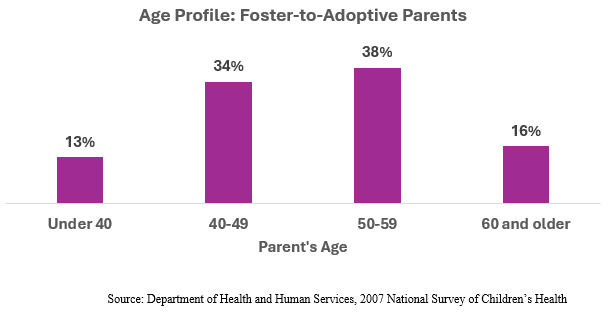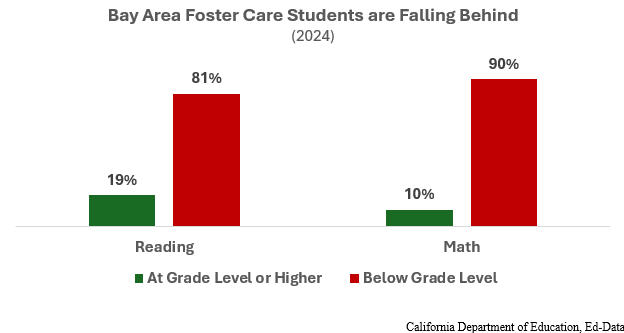Hearts Without Borders: The Reality of Foster Motherhood
A Special Mother's Day Tribute
As we celebrate Mother's Day, one group of mothers often goes unrecognized: foster care mothers. These remarkable women open their hearts and homes to approximately 2,322 vulnerable children in the San Francisco Bay Area, providing essential care during periods of family crisis and transition.
_______________
Motherhood in the Shadows
Foster mothers exist in a unique space within our understanding of motherhood. They provide daily nurturing, guidance, and love, yet often without the recognition afforded to biological or adoptive mothers. They stand in the gap between past trauma and future potential, establishing healing daily routines, navigating complex educational needs, and providing a foundation of stability—all while knowing their time with each child may be temporary.
_______________
Who Are Foster Mothers?
Looking at where foster mothers are located across the Bay Area reveals notable patterns.
The East Bay Counties of Contra Costa and Alameda are home to the highest concentration of foster placements, accounting for 45% of total foster care placements in the Bay Area. This reflects where foster youth are living, not necessarily where they come from—an important distinction we'll explore further.
Complementing the geographical data, broader research reveals who they are:
Approximately 65% attend religious services weekly—notably higher than the general population, indicating strong faith backgrounds
Practicing Christians are twice as likely to foster or adopt than the general population
25% are single mothers, balancing caregiving responsibilities without partner support
While specific data on foster mothers' ages isn't readily available, adoption statistics from foster care indicate the vast majority (over 70%) are in their 40s and 50s
_______________
The Bay Area Foster Care Landscape
In the San Francisco Bay Area, foster mothers navigate uniquely challenging terrain. Only 55% of children in foster care are placed within their home county—significantly below the California average of 75%. This displacement creates additional burdens as foster mothers try to maintain children's connections to their communities, schools, and biological families.
This out-of-county placement is particularly severe in San Francisco (67%) and Alameda Counties (57%), primarily due to insufficient local foster homes.
_______________
The Many Challenges of Foster Motherhood
While foster mothers navigate many challenges, the unique emotional demands of their role shape all other aspects of their caregiving. They face a profound paradox: forming deep bonds with traumatized children while preparing for eventual separation—requiring both deep emotional investment and the strength to let go.
Meeting Complex Mental Health Needs
By definition, foster care involves children who have experienced trauma, often multiple forms. Between 50% and 80% of foster children meet criteria for a mental health disorder. Foster mothers navigate these challenges, often with insufficient training or professional support:
ADHD affects approximately 25% of foster children
PTSD is present in nearly 20% of foster children
In Bay Area schools, children in foster care are suspended five times more frequently than their peers
Bridging Educational Gaps and Instability
Most foster care students struggle academically, falling significantly behind grade-level proficiency. California testing reveals that the vast majority of students in foster care perform below standards in both reading and math, with only 19% proficient in reading and a mere 10% reaching math proficiency for their grade level in 2024.
_______________
Given these academic gaps, foster mothers become educational advocates, working with schools to develop IEPs (Individualized Education Programs), maintaining stability in schooling when possible, and connecting children with additional academic resources—all while helping children process trauma that often interferes with learning.
System Navigation
Beyond emotional and educational challenges, foster mothers must navigate complex bureaucratic systems—often working a part-time administrative job alongside caregiving. They coordinate with welfare workers, courts, and healthcare providers while managing appointments and paperwork that ensures child welfare but creates significant logistical demands.
_______________
Conclusion
Foster motherhood represents mothering at perhaps its most challenging and essential—stepping in precisely when children are most vulnerable. Their form of motherhood requires extraordinary flexibility, emotional resilience, and advocacy skills—often with limited recognition or support.
Mother's Day offers a moment to celebrate all forms of mothering—biological, adoptive, step, inherited, and temporary—recognizing that each expression carries its own unique gifts and challenges.






